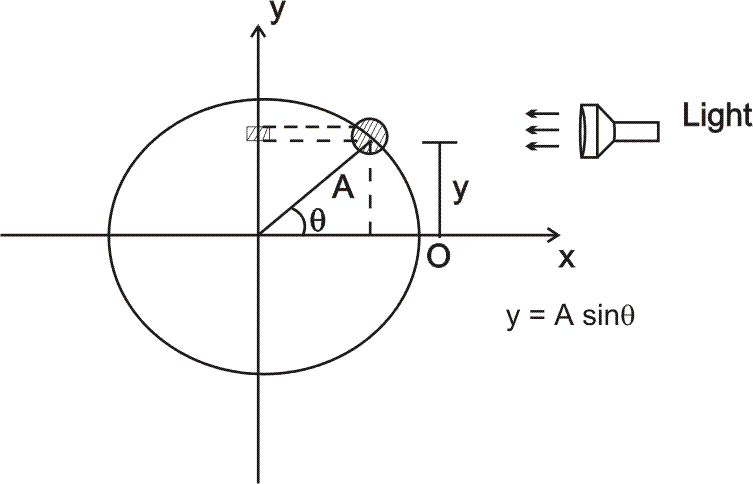SHM -1
Introduction
Natures follows periodicity. The day and night, fhe and death everything is repetitive. Periodic motion is the motion is the motion that repeats itself after a fixed period of time. There are many type of periodic motion; some of them is simple harmonic motion. In SHM, displacement velocity and acceleration all are sinusoids. I,e The can be represented in graphs important an fascinating chapter of mechanics.
It is a motion that repeats itself after regular time interval such that the force acting on it is directed towards a point over the linen (which it executes motion) and the force is also proportional to displacement of particle from that fixed point.
where 
k = force constant = a positive constant
= a positive constant
m = mass of particle
x = displacement
Terms associated with SHM and equation SHM:
(1) Amplitude: it is the maximum displacement of from center of association.
(2) Time period (T): time period is the time interval in w3hich a complete association takes place. Time previous happens when the particle returns to its place and its velocity is also directed in same directions.
Dumb questions: why are their two conditions in above different of time period necessary.
Solution :-
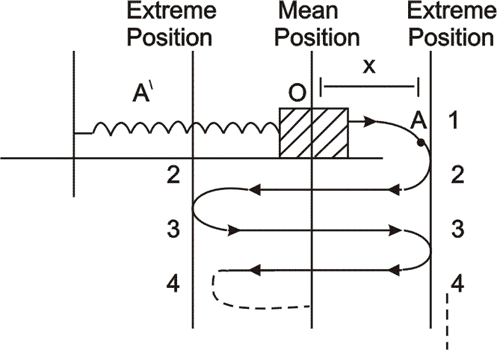
Suppose the block is extended initial by x to point F then replaced. Now initially the velocity is direct toward A. when it comes belong the path2. and crosses B, its velocity is directed toward A' hence this time
(c) Frequency end Angular frequency
Frequency is reciprocal of ti,e period

Angular frequency is
 Also
Also 
Equation of SHM:





putting
 (constant)
(constant)

Let
 constant
constant
(4) Phase : (Ø); The quantity (wt +
 ) is called the phase. This defines the position of a particle in SHM.
) is called the phase. This defines the position of a particle in SHM.Dumb Question : How is time period an phase related ?
Solution:- Suppose for any SHM

Now

Hence after 2
 phase change, the position of particle is same and its moving in same direction. Hence time period can be defined as the interval during which the phase changes by 2
phase change, the position of particle is same and its moving in same direction. Hence time period can be defined as the interval during which the phase changes by 2 !
!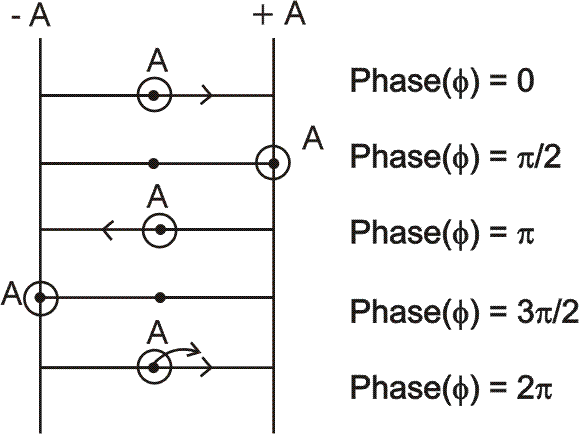
The term
 is called the phase o
is called the phase oNote that


So
 is a quantity totally dependentupon the initial values. (if w = const.)
is a quantity totally dependentupon the initial values. (if w = const.)So basically
 gives us the information about particle's position, velocity etc at t = o.
gives us the information about particle's position, velocity etc at t = o.Eg. Suppose the paticle is at extreme position in at t = 0 ; then phase

Hence the equation os SHM is :

# Illustration : A particle executes SHM of amplitude 5m. along X axis. At t = 0, its position is
 . and it moves the negative x direction.
. and it moves the negative x direction.Find if equation of SHM is
 .
.Solution:-
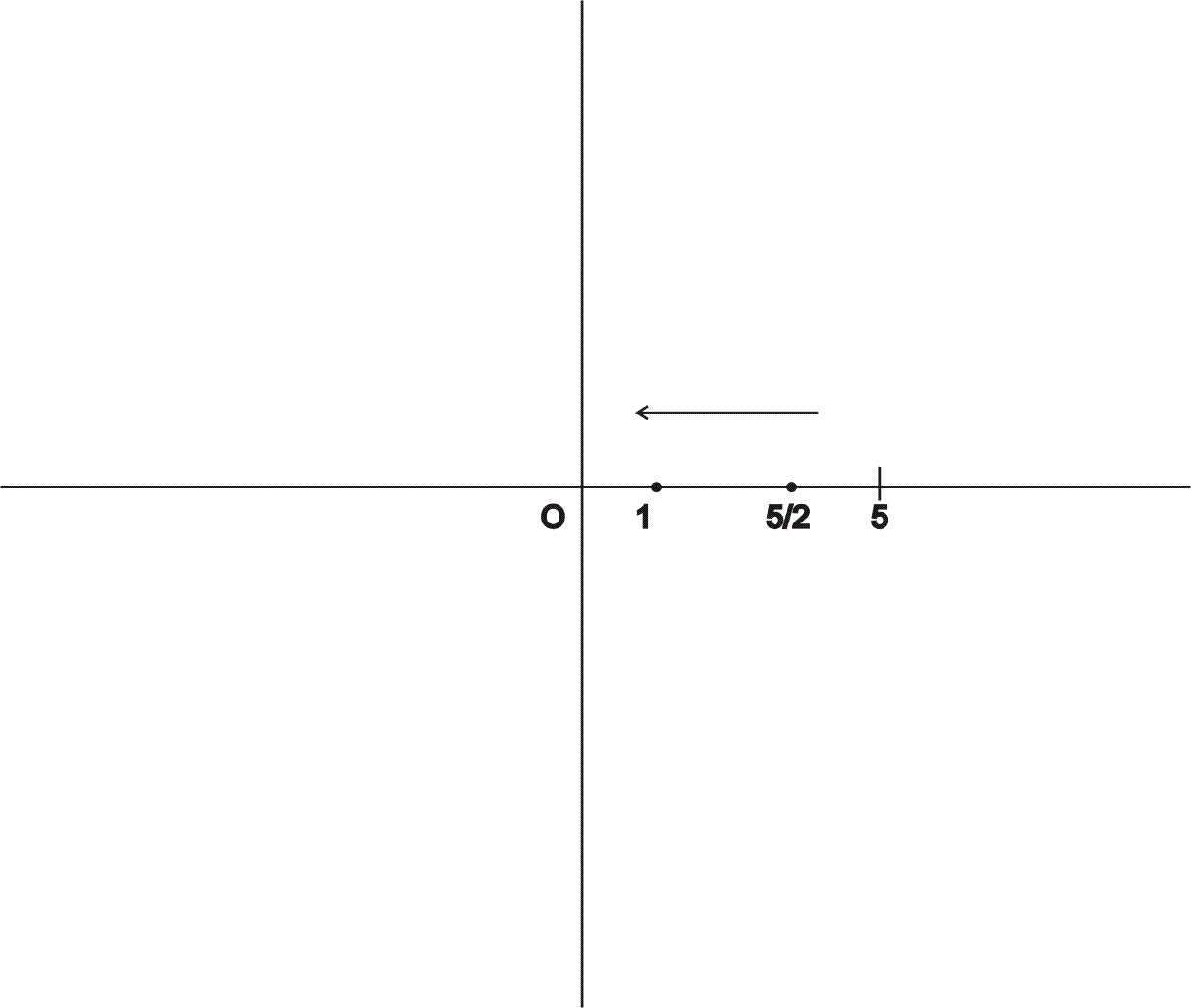

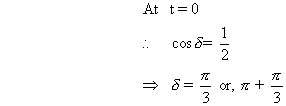
Now velocity is -ve
So if


Now v is negative only for
 Hence
HenceSHM can be easily understood as the y projection of a ball moving in circle of radius = Amplitude A.
If the angular velocity of balls is w then w = w/t

